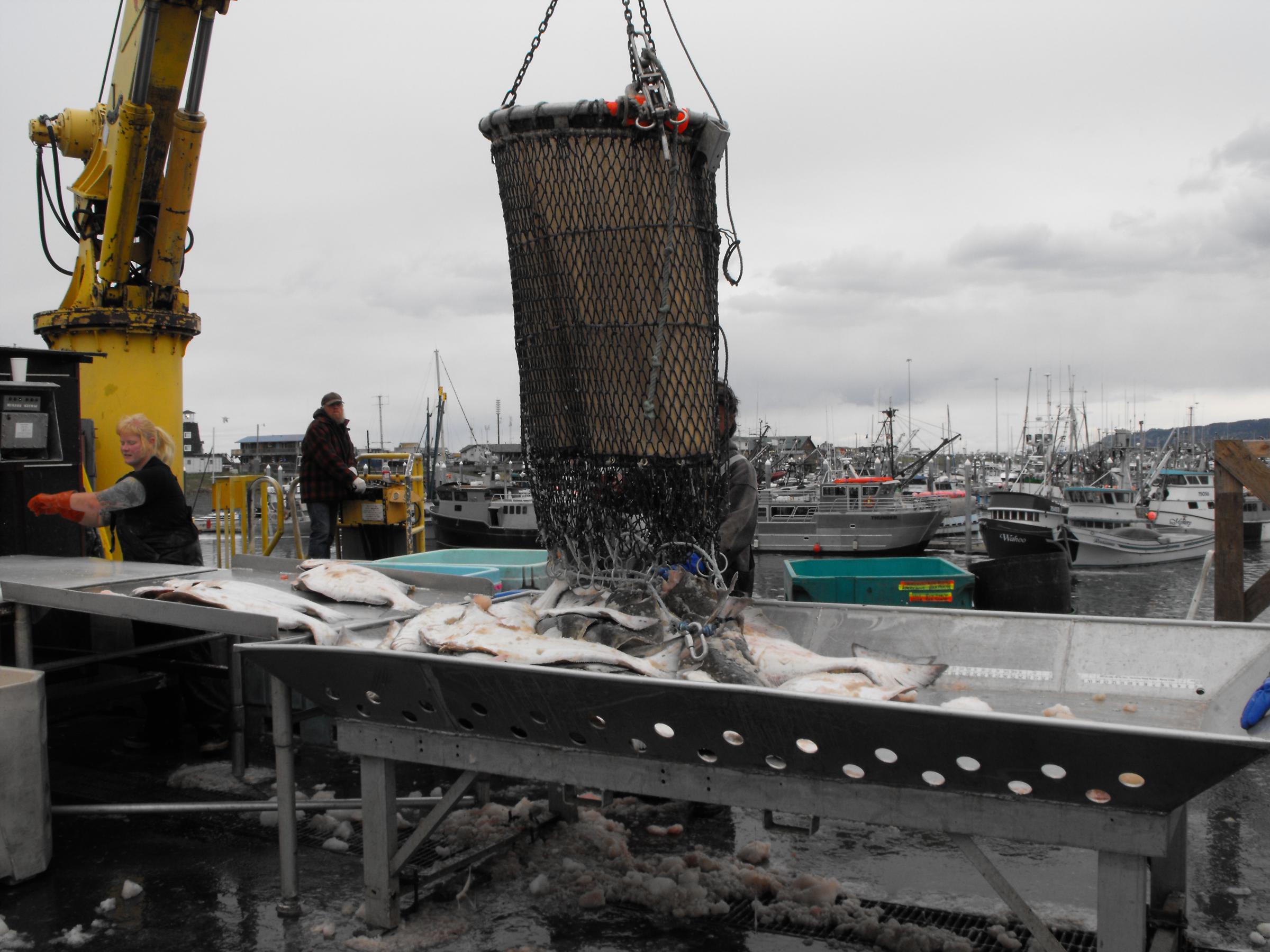
Halibut prices have fallen about $2 per pound, and decreasing demand has left plenty sitting in the freezer from last year.
Billy Sullivan owns a small fish-buying operation in Homer, and he said years of historically high prices – about $20 to $30 per pound at your typical supermarket – have driven consumers away from purchasing Pacific halibut.
That begs the question: will Pacific halibut maintain its spot on the menu or be replaced?
“Fish business goes: first you’re on the menu, then you go on the chalk board, then once you go off the chalk board, you’re done,” Sullivan said as he sliced open a rock fish. “Halibut is off the chalkboard right now.”
Consumers are reluctant to buy expensive fillets in grocery stores and restaurants. A new competitor also is taking over a large portion of the market.
“They went and found alternatives to expensive halibut and the East Coast fish fills in,” Sullivan said.
Fishermen cashed in on high prices last year. Fish buyers in Alaska were eager to buy loads of Pacific halibut, Sullivan said.
By the fall, the market seemed to soften as cheaper Atlantic halibut started to swallow up portions of the market on the East Coast.
“It’s safe to say and safe to assume that the East Coast has traditionally been a primary market for Pacific halibut,” Garett Everidge said, a fish economist with the McDowell Group.
Most of the Atlantic halibut showing up on the East Coast is coming from Canada, he said. Canadian fishermen on the East Coast landed about 8 million pounds of Atlantic halibut in 2016, double the catch 10 years earlier.
“For context, 2018 TAC (total allowable catch) for Alaska is about 17.5 million pounds,” Everidge said. “By comparison it’s still a relatively small amount, but it’s a material force in the market.”
The Canadian fishery is open year-round, making it easier to supply demand for fresh fish in high-end markets, such as Boston.
More Canadian fish buyers are shipping their product into the U.S. as the catch to the north increases, Everidge said, and there’s no substantial commercial fishery for Atlantic halibut in U.S. waters.
Everidge said increased competition along with high Pacific halibut prices might have led to the current backlog of Alaskan fish in the freezer.
Halibut doesn’t provide a very large profit margin, which may make selling that fish take longer, he said.
“There’s tension between selling that product and maintaining the value and maintaining profitability in the short term,” Everidge said.
The surplus of Pacific halibut combined with more competition from the East Coast is driving down prices here in Alaska. Fishermen at the docks have been getting about $5 per pound.
Homer-based commercial fisherman Malcom Milne said he saw this coming last fall after buyers began to turn away loads of halibut.
“When we were getting $7 per pound, it was great – great for the crew shares in the boat,” Milne said. “But it just didn’t seem like a sustainable price point.”
Milne said $5 per pound should still be profitable for most fishermen, and he thinks that price point may get Pacific halibut back on the menu.
“Hopefully we can rebuild some of the markets. I think we probably lost some market share due to substitution,” Milne added. “I know it’s always hard to get back on menus and back in peoples’ minds. Hopefully this will do it.”
That lower price point may not translate to consumers until the surplus of fish in the freezer is sold.
